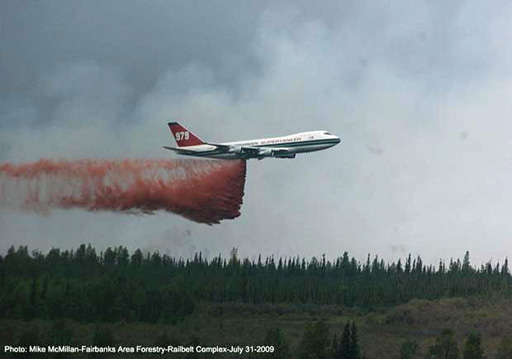 For the last two weeks air tankers have been in the news much more than normal. Even before the two air tanker incidents on June 3, when Tanker 11 crashed killing the two pilots and Tanker 55 landed on disabled landing gear, there was more interest by the news media on the subject than you would normally see. But with the two crashes happening hours apart, this became a story that most large and small news organizations wanted to carry. It was an easy topic for them to grab onto — two dead firefighting heroes, a remarkable landing captured on video with landing gear that failed to extend, a tanker fleet reduced by 80 percent over the last 10 years, museum-age crashing airplanes, Senators issuing press releases calling for GAO investigations, the President signs a bill about air tankers, and contracts are awarded for seven “next generation” jet-powered air tankers.
For the last two weeks air tankers have been in the news much more than normal. Even before the two air tanker incidents on June 3, when Tanker 11 crashed killing the two pilots and Tanker 55 landed on disabled landing gear, there was more interest by the news media on the subject than you would normally see. But with the two crashes happening hours apart, this became a story that most large and small news organizations wanted to carry. It was an easy topic for them to grab onto — two dead firefighting heroes, a remarkable landing captured on video with landing gear that failed to extend, a tanker fleet reduced by 80 percent over the last 10 years, museum-age crashing airplanes, Senators issuing press releases calling for GAO investigations, the President signs a bill about air tankers, and contracts are awarded for seven “next generation” jet-powered air tankers.
Since June 1 we have been interviewed by a number of media outlets, including (in chronological order) KSFR radio in Santa Fe, The Guardian newspaper and web site, ABC news in Denver, Colorado Public Radio, Associated Press, ABC news in New York City, and the Denver Post. No doubt this is just a passing fancy. When the monsoon rains begin in a few weeks and the fires in the southwest and Colorado become a distant memory, interest in air tankers will decline and joggers on the Capitol Mall in Washington will hear a sigh of relief emanating from the U.S. Forest Service offices in the Department of Agriculture building. Unless — heaven forbid, another Korean War vintage air tanker crashes killing more firefighters, or more mega-fires burn hundreds of houses in another part of the country and there are not enough air tankers to go around, again.
The addition of seven air tankers to the existing nine, while it is helpful, is not a long-term solution to the air tanker shortage. Neither is the temporary addition of eight borrowed from Alaska, Canada, and California. The USFS should have awarded contracts for at least 20 additional air tankers, not 7.
It will be interesting to see over the next year if the USFS develops a detailed long-term strategy for aerial firefighting which meets the approval of the Government Accountability Office and the Department of Agriculture’s Inspector General, two offices that have been critical of the USFS’s previous air tanker reports. Then, Congress will need a specific, detailed proposal that they can consider, and we will see if the *Senators and Congressmen who have called for changes in the air tanker program will support improvements by actually doing something meaningful, rather than just talking and writing letters.
*Senators that have questioned the U.S. Forest Service’s management of the air tanker program include Ron Wyden of OR, Jon Kyl, AZ; Lisa Murkowski, AK; Jeff Bingaman, NM; Ron Wyden, OR; Mark Udall, CO; Jon Tester, MT; and Dianne Feinstein, CA.







